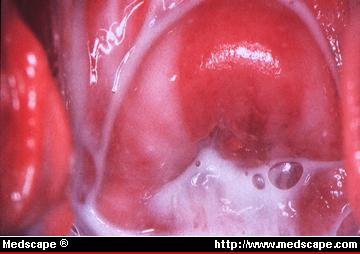Bacterial Vaginosis
Bacterial Vaginosis is a bacterial disease that occurs when there is an imbalance of acidity levels (or pH balance) inside the vagina that leads to an overgrowth of harmful bacteria (Bacterial Vaginosis, 2009).
How Common is it?
This disease is the most common vaginal infection of women who are within a childbearing age (CDC, 2012). Studies have shown that it affects 29% of women in the US and roughly 60% of women who have a sexually-transmitted disease (MedicineNet, 2012).
What Causes it?
While the exact causes of bacterial vaginosis are under some debate, it is agreed that it is due to the imbalance of bacteria in the vagina. It has been observed to be more common in women who
- Have new or multiple sex partners
- Engage in douching
- Use an intrauterine form of birth control
- Wear thongs
- Do not use a condom
Signs & Symptoms
 While some women experience no symptoms at all, common symptoms of bacterial vaginosis include abnormal vaginal discharge that emits an unpleasant odor (WomensHealth, 2012). The discharge may be a shade of grey and can have a fish-like odor (STDResource, 2012). A woman may also experience pain in the vagina area (Bacterial Vaginosis, 2009), burning when urinating, or irritation and itching around the outside of the vagina (WomensHealth, 2012).
While some women experience no symptoms at all, common symptoms of bacterial vaginosis include abnormal vaginal discharge that emits an unpleasant odor (WomensHealth, 2012). The discharge may be a shade of grey and can have a fish-like odor (STDResource, 2012). A woman may also experience pain in the vagina area (Bacterial Vaginosis, 2009), burning when urinating, or irritation and itching around the outside of the vagina (WomensHealth, 2012).
What if Bacterial Vaginosis is not Treated?
Long lasting problems can occur if BV is not cured. Women may develop Pelvic Inflammatory Disease (PID), endometritis, or cervicitis. BV also leaves women more susceptible to STDs such as STDs, herpes, gonorrhea, and Chlamydia (Bacterial Vaginosis, 2009). Women who are pregnant can experience complications that can lead to undesired and devastating outcomes such as premature delivery or stillbirth (Bacterial Vaginosis, 2009).
Diagnosis and Treatment
Diagnosis can be determined by a pelvic exam, testing of samples taken from the vagina, and a series of routine questions (MedicineNet, 2012). If seeing a doctor to determine if you have BV, be sure to schedule your exam between menstrual cycles, do not douche for a minimum of 24 hours before the exam, do not apply vaginal deordorant sprays, and do not place objects in your vagina, such as tampons or sex toys, for a minimum of 24 hours prior to the appointment (WomensHealth, 2012).
There are a number of treatments available for BV. It can be treated by some doctor prescribed antibiotics such as metronidazole or clindamycin (WomensHealth, 2012). Over-the-counter medicines are also available such as Fernanol, Destinol, or Fem-Dophilus and are reported to have good results (Bacterial Vaginosis, 2009). There are also a number of natural home remedies that have been reported to be affective. These remedies are not often doctor recommended and some of these techniques go against what is recommended by Health Authories but some women prefer these remedies as they are reported to be effective, privacy protecting, and inexpensive.
- Yogurt may be eaten orally or applied directly the walls of the vagina. To apply directly to the walls, soak a tampon in PLAIN yogurt and then insert it
- Cranberry juice will help maintain a healthy balance if consumed on an ongoing basis. This solution is helpful for long term health
- Apple cedar vinegar can assist in returning a healthy balance of bacteria (Bacterial Vaginosis, 2009)
For best results and to ensure overall health, a doctor should be consulted and women should be aware that some antibiotics may render birth control ineffective (STDResource, 2012).
Reduce the Risk!
So how can the risk be reduced of contracting or developing BV? As with all STDs and STIs, there are some simple ways to reduce the risks and keep up sexual health
- Consume healthy natural products that help keep a balance such as yogurt or cranberry juice
- Restrict your number of partners
- Ensure all partners are undergoing regular screenings and examinations
- Practice safe sex methods during all sexual contact (WomensHealth, 2012)
- Ensure all toys are appropriately cleaned
Healthy Body, Better Play
You can really enhance your sex and BDSM life as well as the happiness of your everyday life by taking proper care of your body and this means taking the appropriate care of your sexual health. It is important to follow safe sex practices and get regular screenings to ensure your best health. Part of taking care of your sexual health is also having open and frank communication with any sexual partners about their health status and precautions.
Article References
Bacterial Vaginosis. (2009). Bacterial Vaginosis. Retrieved 02 29, 2012, from The Bacterial Vaginosis: http://www.thebacterialvaginosis.com/
CDC. (2012). Bacterial Vaginosis. Retrieved 02 29, 2012, from Center for Disease Control and Prevention: http://www.cdc.gov/std/bv/STDFact-Bacterial-Vaginosis.htm
MedicineNet. (2012). Bacterial Vaginosis. Retrieved 02 29, 2012, from MedicineNet: http://www.medicinenet.com/bacterial_vaginosis/article.htm
STDResource. (2012). Bacterial Vaginosis. Retrieved 02 29, 2012, from STDresource: http://www.stdresource.com/disease/index.php?page=edit&id=16&action=viewfull
WomensHealth. (2012). Bacterial vaginosis fact sheet. Retrieved 02 29, 2012, from WomensHealth: http://womenshealth.gov/publications/our-publications/fact-sheet/bacterial-vaginosis.cfm
Image References
Someone else's art deserves recognition! The images presented in this article were borrowed from the following places:
Header Image: http://img.ehowcdn.com/750x500/ehow/images/a05/dv/vv/bacterial-vaginosis-during-menopause-800x800.jpg | Retrieved April 28, 2015
Image 1: http://img.medscape.com/article/mgmpre00/art-w293.fig1.jpg | Retrieved April 28, 2015